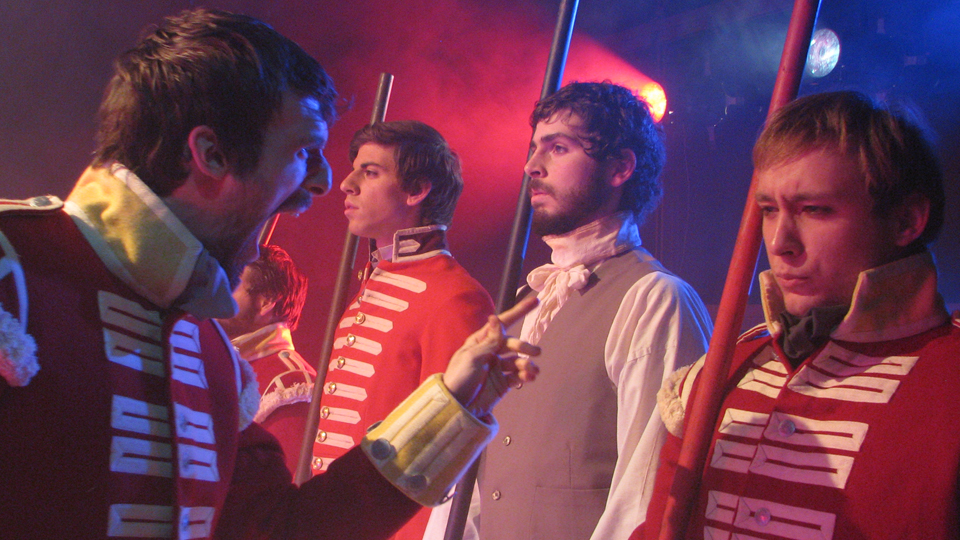In the Midst of Alarms: Women and the War of 1812 is not a play in the traditional sense of the word. It is a sort of sensory experiment, using lights, sound, dance, movement, song, and scenery to tell a story surrounding a theme. The third-year class of the theatre and drama studies program have put together an aptly named collective about a war without taking sides, and they give a voice to everyone—even those who have been left out of the history books.
Plays about wars can be problematic. Either the wars happened so long ago that no one alive now was alive then, or they’re so recent that they’re touchy, controversial, and hardly ever make for family-friendly theatre. The large speaking parts tend to go to men, which (ask anyone in the theatre business) is simply not suited to the number of women striving for a good part in a show.
To solve the problem of gender equality, In the Midst of Alarms looks at the war of 1812 from the other side: that of the women who nursed, lost, found, and slandered their men. But the first problem remains: how do you make a 200-year-old war speak to a modern audience? One option is that you don’t, insisting heatedly that people will watch period theatre and they had better like it. The better choice, though, is to bring the history up to the present.
Written by the performers, the text of In the Midst of Alarms retains a certain degree of classical idiom, but only enough to locate the audience in the time period. The rest is very contemporary, both in writing and delivery. None of the performers get caught up in the airs often associated with period work, which makes it more truthful and easier to relate to.
Using an off-white stage and light-coloured costumes, the production takes advantage of projections and lighting experiments. The projections are highly sophisticated, consisting mostly of portraits and landscapes that help tie the actors to the past. They remind us that the people who sat for those portraits had lives and stories to tell, and their stories will be told and shared even 200 years after the fact. The lighting is far from easy and conventional washes and spots. Instead, the lights are coloured and textured and are always moving and changing depending on the scene, often accompanied by music. Lights are placed at angles that don’t necessarily give visibility, but rather dramatic effect. In fact, the lights and sound tell the story as much as the dialogue does.
The overall aesthetic, pale and fairly uniform, is made even more so by two huge lengths of off-white fabric that are put to any number of uses. They are the sails of a ship, the aisle of a church, water, and, in one scene, the only thing keeping a group of women from storming a shop. Since the show is mainly made up of vignettes, the cloth helps establish continuity between the scenes. Similarly, wooden dowels serve as various props throughout the show and fit into pockets in the fabric so that it can be manipulated with greater control. The set is minimal, consisting of a few benches and a table, repurposed as stools, beds, and lookouts.
There is very little in the way of a set, but the actors use their bodies to make one. They become the forest that Laura Secord runs through, made all the more terrifying by their constant movement. I’ve never seen trees that writhed, but if it were me running through the woods in a war zone, I don’t doubt that they would probably appear to move and get in my way on purpose. The actors also become a surprisingly intricate mail wagon, complete with a driver, turning wheels, and horses.
In the Midst of Alarms is more of a sensory experience than a show, especially given the variety of forms of expression used to create it. At once touching and funny, witty and honest, this performance is a credit to the third-year class. It marks a noble debut in their Theatre Erindale careers—a debut that will no doubt be matched by their later performances.
In the Midst of Alarms: Women and the War of 1812 runs until Sunday, November 25.



